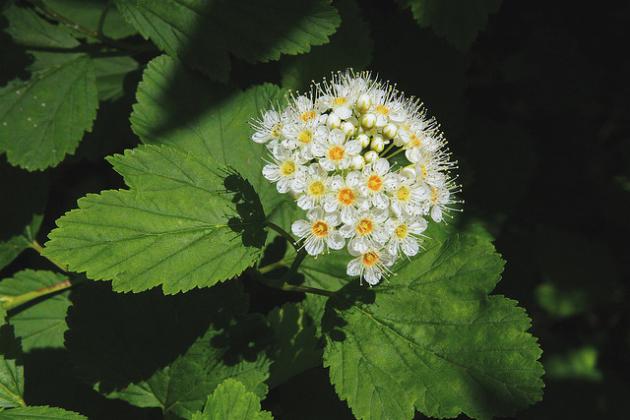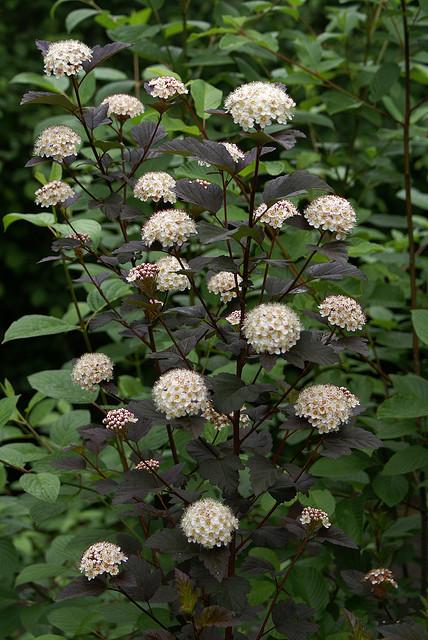Plant Family
Rose Family (Rosaceae)
Common Names
Mallow or Mallow-leaved ninebark (P. malvaceus), Common or Eastern ninebark (P. opufolius)
Description
There are several native ninebark species found in North America. Two of the most commonly used in the landscape are Physocaropus opufolius and Physocaropus malvaceus



Physocarpus opufolius (Common ninebark, Eastern ninebark)
- Medium to large sized shrub native to central and the Eastern U.S.
- Mature size ranges from 5 to 8 or more feet high and to about 10 feet wide
- Many cultivars have been produced from this species
- Smaller cultivars are available in a variety of leaf colors including dark burgundy
- Clusters of white to pinkish flowers bloom in late spring
- This shrub grows best in full sun
- Somewhat drought tolerant.
- Adapted to USDA Hardiness Zones 2 through 7
Attracts
Bees and butterflies
Note that the Calligrapha spiraeae beetle feeds on P. opufolius ninebark. Adults and larva may do considerable damage to leaves. Newer cultivars are more resistant to this beetle.
Physocarpus malvaceus (Mallow leaved ninebark)
- Medium sized shrub native to the western U.S. and Canada
- Mature height is about 6 feet tall and width is about 3 to 4 feet wide
- Clusters of white to pinkish flowers bloom in late spring and early summer
- Leaves are more rounded than those of common ninebark
- Ninebarks can tolerate shade and survive up to 11,000 feet in their native mountain habitat.Mallow
- Adapted to Zones 2 through 5
- Grow best on moist well drained soils but are moderately drought tolerant
Attracts
Bees
Butterflies
Additional Resources:
USDA Plants Database
Physocarpus malvaceus
Physocarpus opufolius
